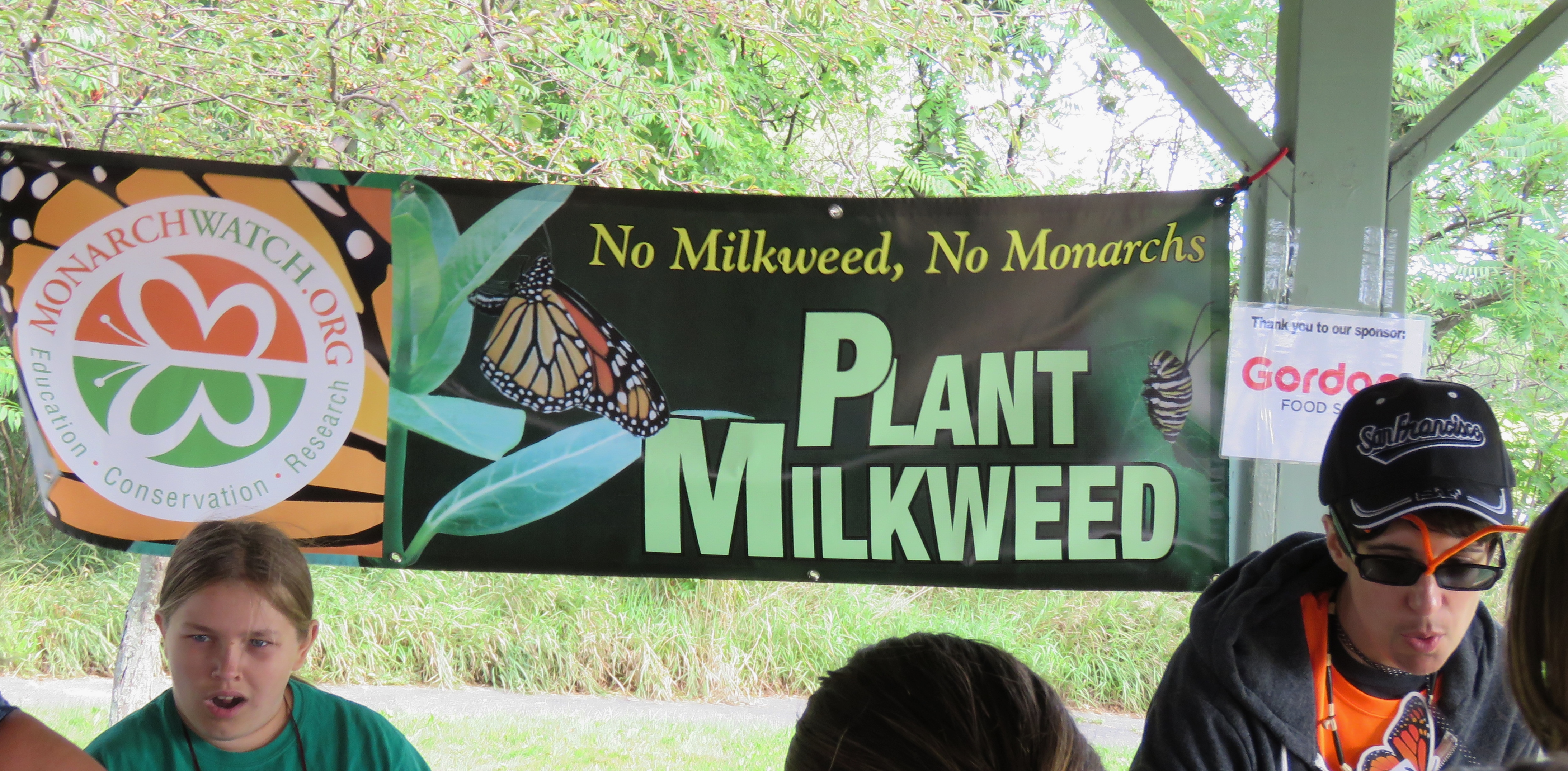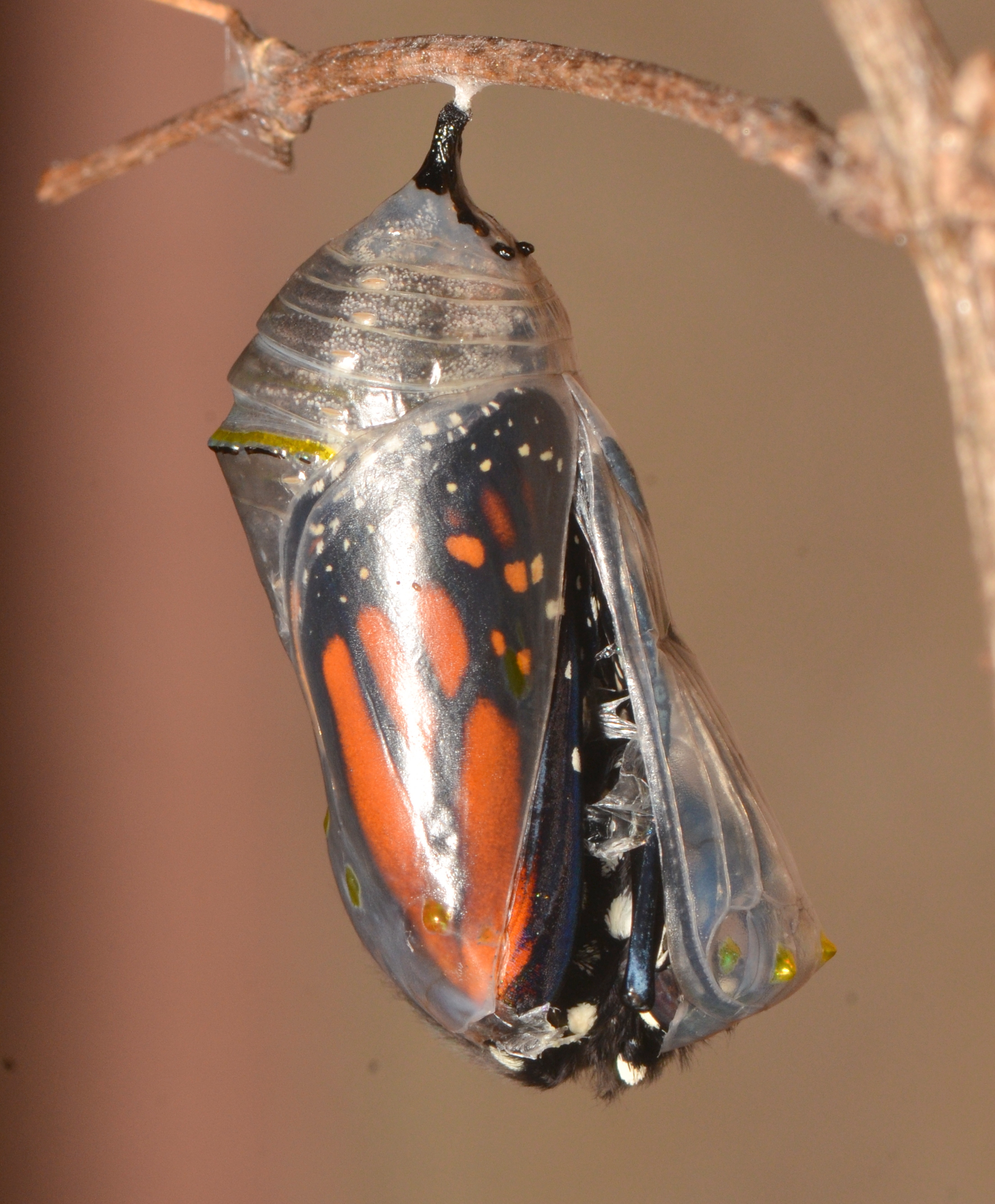WILDER SIDE OF OAKLAND COUNTY

The monarch butterfly‘s migration is perhaps the most magnificent migration of any species. Most monarchs that are now emerging from their chrysalises in Oakland County will attempt to fly all the way to the mountains of central Mexico. Monarchs know no borders, and Mexico is their overwintering destination. Some will be successful in that hazardous journey now underway, however many of these delicate beauties will die en route. To keep the journey alive in Oakland County, it is paramount that milkweed plants continue to grow here, because without them there would be no monarchs.
 Education plays a big role. Enhancing monarch habitat by planting milkweed is akin to creating birthing rooms and feeding stations in one easy action. A colorful new interpretive sign created for Oakland County Parks shares the message of the great migration, the magic of metamorphosis and the need to plant and protect milkweed. Milkweed is only a weed to many humans, but for the monarch it is life, for it is the sole food source for the colorful larvae of the monarch. That’s where this tale begins, here in Oakland County where many park agencies and residents strive to create monarch way stations, landscapes that support milkweed.
Education plays a big role. Enhancing monarch habitat by planting milkweed is akin to creating birthing rooms and feeding stations in one easy action. A colorful new interpretive sign created for Oakland County Parks shares the message of the great migration, the magic of metamorphosis and the need to plant and protect milkweed. Milkweed is only a weed to many humans, but for the monarch it is life, for it is the sole food source for the colorful larvae of the monarch. That’s where this tale begins, here in Oakland County where many park agencies and residents strive to create monarch way stations, landscapes that support milkweed.
 Some sections of Oakland County are nearly barren of milkweed. In other areas milkweed thrives in old fields, fallow farmlands, along roadsides and increasingly in small wayside wildflower gardens created specifically for monarchs. Springfield Township Parks and Recreation hosted a monarch festival last month where hundreds of participants had a hands on opportunity to explore the life history of monarchs and ‘tag’ monarchs to help track their journey. They were also able to take larvae home to raise until they metamorphosed into an adult. Most important to the cause, milkweed seeds and plants were available.
Some sections of Oakland County are nearly barren of milkweed. In other areas milkweed thrives in old fields, fallow farmlands, along roadsides and increasingly in small wayside wildflower gardens created specifically for monarchs. Springfield Township Parks and Recreation hosted a monarch festival last month where hundreds of participants had a hands on opportunity to explore the life history of monarchs and ‘tag’ monarchs to help track their journey. They were also able to take larvae home to raise until they metamorphosed into an adult. Most important to the cause, milkweed seeds and plants were available.
 Life for a monarch begins as a tiny egg laid on the leaf of a milkweed plant. In four or five days it hatches into a caterpillar so tiny it is difficult to see with the naked eye. For the next few weeks they munch on milkweed and in the process incorporate toxins into their body that makes them very bitter, and perhaps prevents predators from eating them. Once it has reached its full size, the caterpillar will hang from a leaf and begin the near magical process of becoming a chrysalis. In this stage, known as the 5th Instar, the caterpillar transforms into a pupa. Two weeks later, an adult monarch emerges, ready to fly south to Mexico.
Life for a monarch begins as a tiny egg laid on the leaf of a milkweed plant. In four or five days it hatches into a caterpillar so tiny it is difficult to see with the naked eye. For the next few weeks they munch on milkweed and in the process incorporate toxins into their body that makes them very bitter, and perhaps prevents predators from eating them. Once it has reached its full size, the caterpillar will hang from a leaf and begin the near magical process of becoming a chrysalis. In this stage, known as the 5th Instar, the caterpillar transforms into a pupa. Two weeks later, an adult monarch emerges, ready to fly south to Mexico.

Courtesy of Rick Lampman, naturalist.
The monarchs that are now fluttering overhead, pausing to sip on nectar from flowers, go all the way to Mexico, a truly incredible journey. It is a great must-see spectacle when they funnel themselves over narrow strips of land before crossing large bodies of water, such as Point Peele National Park, located southeast of Detroit on the northern shore of Lake Erie.

Courtesy of Rick Lampman, naturalist.
The return journey starts next spring, but no individual butterfly completes the entire round trip. The female monarchs lay eggs during their northward migration and it may take two or three generations to complete the journey back home to Michigan. Next year when the monarchs return, let’s have milkweed waiting for them on the Wilder Side of Oakland County—and perhaps in urban lots, and your yard too.
Jonathan Schechter is the Nature Education Writer for Oakland County Government and blogs weekly about nature’s way, trails, and wildlife on the Wilder Side of Oakland County.
For the latest county news and events, visit our website and use #OaklandCounty on our Facebook, Twitter, Instagram and LinkedIn pages.

We are trying, so very hard, to have the Monarch become Michigan’s official state insect. We currently have two bills – one in the Senate #SB812 and one in the House #HB5560. With over 4,500 signatures from residents all over Michigan, support from from 7 cities and 2 school districts and support from many, many groups including MUCC, we still wait for lawmakers to simply move one or both bills. Thank you Oakland Co. for all you do to help protect the Monarch. We could use all the help we can to get these bills to move. Please consider helping us to further protect the Monarch. http://www.michiganmonarch.com
Sincerely,
Karen Meabrod
[…] of the monarch continues. Grasshoppers leap away from our approach. Crickets sing to the night. Bucks are […]
[…] mammals and other creatures including numerous frogs and salamanders. Yet, I can’t leave out the Monarch Butterfly, attracted to the prairie plants for nectar and milkweed that will assure a new generation. Now is […]
[…] The words placid, tranquil, and quiet are not words I normally associate with the bustle, noise, and urban hustle of Waterford Township, but on the river a new world emerged. Though not a wilderness, a healthy degree of wildness thrived along the river banks. After skirting around our first obstacle in the river, a tangle of kayak-grabbing branches held in place by a partially submerged log, I switched into nature-observer mode. Within the first ten minutes, I noted deer tracks on the muddy banks, painted turtles trying to catch some of the sun’s warmth under the cloudy sky, and a swimming muskrat. A few seconds after the muskrat encounter, a beaver-gnawed branch drifted by. The shoreline trees and shrubs were alive with songbirds, and clumps of swamp milkweed attracted butterflies. […]
[…] sat on benches, moms and kids gathered at a play structure, flocks of waterfowl floated in a bay, milkweed seeds took flight in gentle puffs of wind and a pair of Sandhill Cranes hunted insects in the greens of […]